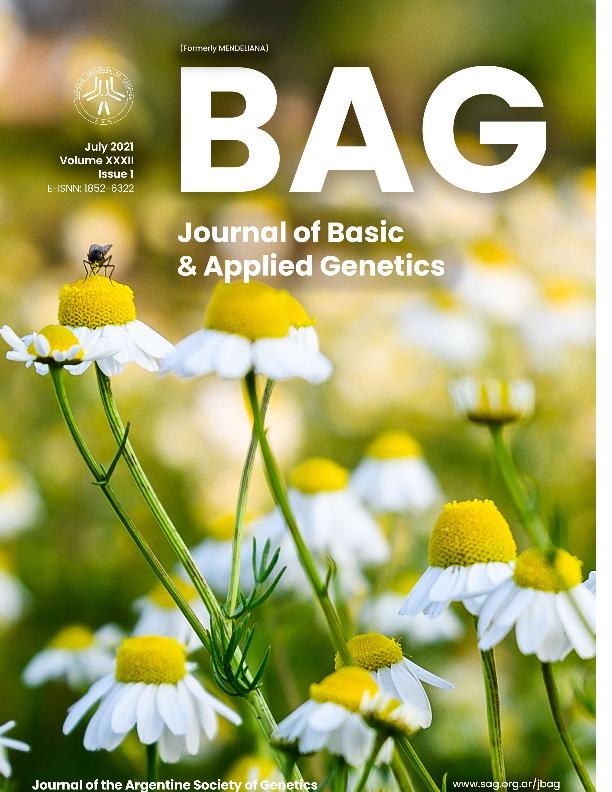Artículo
Los recursos genéticos vegetales para la alimentación y la agricultura se conservan ex situ en bancos de germoplasma como muestras (introducciones) de poblaciones naturales o naturalizadas ya sea como propágulos originales (mayoritariamente semillas) o sus multiplicaciones. Las premisas subyacentes son que (a) es la alternativa más segura y barata de preservación de germoplasma para futuras generaciones y (b) las introducciones son representativas de la diversidad genética que se encuentra en la naturaleza En las últimas décadas, se han presentado ideas, alternativas y consideraciones sobre el tema y se han elaborado protocolos para el muestreo, conservación y multiplicación de germoplasma. Sin embargo, organizaciones internacionales han señalado limitaciones en la eficiencia del manejo de los bancos de germoplasma. En nuestra opinión, se necesita revisar el funcionamiento y manejo de dichos bancos en general a la luz de los principios y métodos de Genética. Para tal fin, es necesario considerar la biología reproductiva de las plantas superiores -cuyas consecuencias genéticas a nivel de planta individual y de población no se comprenden en su totalidad o no se consideran al idear los protocolos -, las estructuras genéticas de poblaciones naturales y cultivadas, y el curso del material genético en las poblaciones. En este trabajo discutimos los tres temas y proveemos un ejemplo de un programa nacional de mejoramiento de forrajeras, desde las introducciones como germoplasma de origen hasta la obtención de cultivares comerciales. Finalmente, presentamos una propuesta como base de discusión entre curadores, investigadores y mejoradores. Plant genetic resources for food and agriculture are ex situ conserved in germplasm banks as samples (accessions) of natural or naturalized populations, either as the originally sampled propagules (mainly seeds) or their multiplications. The premises underlying ex situ conservation are that (a) it is the safest and cheapest alternative for germplasm preservation for future generations and (b) accessions are representative of the genetic diversity encountered in nature. In the past decades, ideas, alternatives and considerations have been put forward on the topic, and protocols have been devised for plant germplasm sampling, conservation and multiplication. However, limitations in the management efficiency of germplasm banks have been pointed out by international organizations. In our opinion, germplasm banks in general need to revise their functioning and management at the light of principles and methods of Genetics. To that end, it is necessary to consider the reproductive biology of higher plants -whose genetic consequences at both the individual plant and the population levels are not always either fully understood or taken into account in devising the protocols-, the genetic structures of wild and cultivated populations, and the course of the genetic material in the populations. In this paper, we discuss the three topics and provide an example of a national forage breeding program, from germplasm bank accessions as the germplasm of origin to the obtainment of commercial cultivars. Finally, we present a proposal as a base for discussion among curators, researchers and breeders.
Ex situ plant germplasm conservation revised at the light of mechanisms and methods of genetics
Título:
Conservación de germplasma ex situ revisada a la luz de mecanismos y métodos de genética
Fecha de publicación:
07/2021
Editorial:
Sociedad Argentina de Genética
Revista:
Basic and Applied Genetics
ISSN:
1666-0390
Idioma:
Inglés
Tipo de recurso:
Artículo publicado
Clasificación temática:
Resumen
Palabras clave:
ACCESSIONS
,
BREEDING
,
GENETIC RESOURCES
,
GERMPLASM BANKS
,
POPULATION GENETICS
Archivos asociados
Licencia
Identificadores
Colecciones
Articulos(CCT - MAR DEL PLATA)
Articulos de CTRO.CIENTIFICO TECNOL.CONICET - MAR DEL PLATA
Articulos de CTRO.CIENTIFICO TECNOL.CONICET - MAR DEL PLATA
Citación
Camadro, Elsa Lucila; Rimieri, P.; Ex situ plant germplasm conservation revised at the light of mechanisms and methods of genetics; Sociedad Argentina de Genética; Basic and Applied Genetics; 32; Issue 1; 7-2021; 11-24
Compartir
Altmétricas




